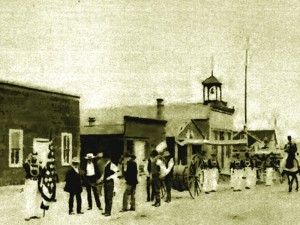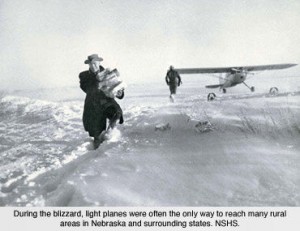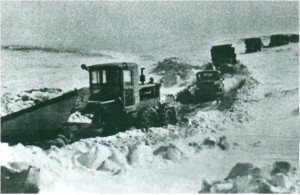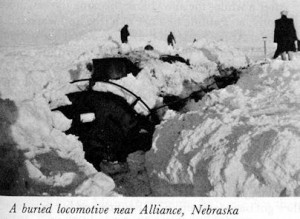ranchers
 While I am not a real Casper native, I have lived here since I was 3 years old. In a city that is 125 years old, that means that I have lived here for 44% of the years that Casper has existed. During my years here, I have learned that Casper was named after the fort that had existed here, called Fort Casper. Fort Casper was named after Lieutenant Caspar Collins, who was killed by Indians near the fort in 1865, but the Army misspelled his name. For anyone who has lived here very long…or at least attended public school here, that was common knowledge, as well as a school field trip most of us took. That fact was one of the first things a young student in Casper should know.
While I am not a real Casper native, I have lived here since I was 3 years old. In a city that is 125 years old, that means that I have lived here for 44% of the years that Casper has existed. During my years here, I have learned that Casper was named after the fort that had existed here, called Fort Casper. Fort Casper was named after Lieutenant Caspar Collins, who was killed by Indians near the fort in 1865, but the Army misspelled his name. For anyone who has lived here very long…or at least attended public school here, that was common knowledge, as well as a school field trip most of us took. That fact was one of the first things a young student in Casper should know.
When the people of Casper first decided to incorporate, this was a pretty wild town. It was filled with mostly saloons, dancing girls, and prostitutes. That was really quite typical of most early wild west towns. The residents Casper asked the officials of Carbon County, where Casper was located until Natrona County split from Carbon County, if they could incorporate the town of Casper. The request was approved on July 8, 1889…125 years ago today, and Casper was born. Of course, the citizens of Casper knew that things would have to change because there  were things that made a town a proper town, and things that made it a lawless hangout. A proper town needed water, streets, schools, a fire department, a library, and a government to assure its stability. The people of Casper elected George Mitchell as mayor, and Robert White, Peter Demorest, Alexander McKinney and John Adams as councilmen. Before long Casper would be home to three county courthouses. The first one on David Street built in 1895, the second in the middle of North Center at A Street built in 1908, and the present county building on Center between A and B Streets was built in 1940.
were things that made a town a proper town, and things that made it a lawless hangout. A proper town needed water, streets, schools, a fire department, a library, and a government to assure its stability. The people of Casper elected George Mitchell as mayor, and Robert White, Peter Demorest, Alexander McKinney and John Adams as councilmen. Before long Casper would be home to three county courthouses. The first one on David Street built in 1895, the second in the middle of North Center at A Street built in 1908, and the present county building on Center between A and B Streets was built in 1940.
In the early years cattle and sheep ranching was the main source of Casper’s wealth, and the most successful ranchers built the fine houses in Casper’s mansion district located south of the downtown area. Soon, however the wealth shifted more to oil, when the Salt Creek Field, 40 miles north of Casper, a rich source of oil, was discovered. Soon refineries went up, and Casper became a boom town. Much has changed over the years, and I’m sure that very little about Casper is like it used to be. I suppose that if the city founders could see it now, they would be amazed…or maybe they could see that potential all along.  As for me, I can recall many changes too. I remember when Walsh Drive was the edge of town. Kelly Walsh High School was almost on the prairie. I also remember when Kmart was being built…at the current Hobby Lobby location, and when it was built in its current location. I remember when the Texaco Refinery closed, and a lot of its workers, including my Uncle Larry took the transfer that would move him and my Aunt Jeanette to Louisiana for a number of years. Many businesses have come and gone over the years, as have people, but Casper has remained and thrived. Today is Casper’s 125th birthday. Happy birthday Casper!!!
As for me, I can recall many changes too. I remember when Walsh Drive was the edge of town. Kelly Walsh High School was almost on the prairie. I also remember when Kmart was being built…at the current Hobby Lobby location, and when it was built in its current location. I remember when the Texaco Refinery closed, and a lot of its workers, including my Uncle Larry took the transfer that would move him and my Aunt Jeanette to Louisiana for a number of years. Many businesses have come and gone over the years, as have people, but Casper has remained and thrived. Today is Casper’s 125th birthday. Happy birthday Casper!!!

 A few days ago, my father-in-law received a phone message from an old family friend. She was calling to wish my mother-in-law a belated happy birthday, and to ask my father-in-law what he remembered about the 1949 blizzard in reference to Colstrip, Montana. Since my father-in-law was in the hospital at the time, I called her back and told her that I would have him call her. Meanwhile, my own interest was peaked about this blizzard, of which I had been totally unaware prior to this call. I got on the Internet and did some searching of my own, and I was quite surprised at what I found.
A few days ago, my father-in-law received a phone message from an old family friend. She was calling to wish my mother-in-law a belated happy birthday, and to ask my father-in-law what he remembered about the 1949 blizzard in reference to Colstrip, Montana. Since my father-in-law was in the hospital at the time, I called her back and told her that I would have him call her. Meanwhile, my own interest was peaked about this blizzard, of which I had been totally unaware prior to this call. I got on the Internet and did some searching of my own, and I was quite surprised at what I found.
The 1949 blizzard began on January 2, 1949, and it was soon to be called the “worst winter ever” by anyone who had the misfortune to go through it. The storm roared across several states, and was actually a series of storms that raged on until February 22, and dumped between 50 and 60 inches of snow, depending on where you were. It put a whole lot of people, especially farmers and ranchers in dire straits. Before long everyone knew that something was going to have to be done. Emergency flights of supplies began bringing everything from food to hay to the desperate people in the area. Snow plows pushed through in an effort to get truckloads of hay into the ranchers. Still, it would not be enough to stop the massive loss of livestock that the coming spring would reveal, not to mention the 235 people across several states who lost their lives. My father-in-law told me that the cows tried to stay above the snow by walking on it as it fell. When the snow got very deep, the cows ended up walking above the trees. Then the weight of their bodies caused them to fall through the snow and into the tree tops, where the were trapped and died of starvation. Some ranchers lost entire herds of cattle, either to falling through the tree tops, or being buried alive. My father-in-law told me that the spring brought a horrible sight. Dead cattle hanging in the trees…everywhere.
Transportation came to a standstill too. Before long trains were unable to move forward, and became buried in the snow, right where they stood. When the tracks were finally cleared, the snow would stand as much as 18 feet high beside them. I’m quite sure it was an eerie sight when the trains finally began to move again, because the piled snow was much higher than the trains, and so prevented any view from the train. Not that it mattered much, because there was nothing but snow to see anyway. I can imagine that if a person was at all claustrophobic, however, the feeling that they would encounter going down that track would be almost more than they could bear.
The spring of 1949, would bring to an end, “worst winter ever” and the beginning of healing for many people. 
 Ranchers would have to begin again. Their herds would have to be rebuilt, and it would take much time and a lot of work. I can imagine that the flooding from all that snow was devastating too. Still, healing would take place too. That spring was also one of beginnings, such as the beginning that is so special to my father-in-law, because on June 6, 1949 he would marry the love of his life, my mother-in-law, and so began their years of marriage…63 years and counting.
Ranchers would have to begin again. Their herds would have to be rebuilt, and it would take much time and a lot of work. I can imagine that the flooding from all that snow was devastating too. Still, healing would take place too. That spring was also one of beginnings, such as the beginning that is so special to my father-in-law, because on June 6, 1949 he would marry the love of his life, my mother-in-law, and so began their years of marriage…63 years and counting.

